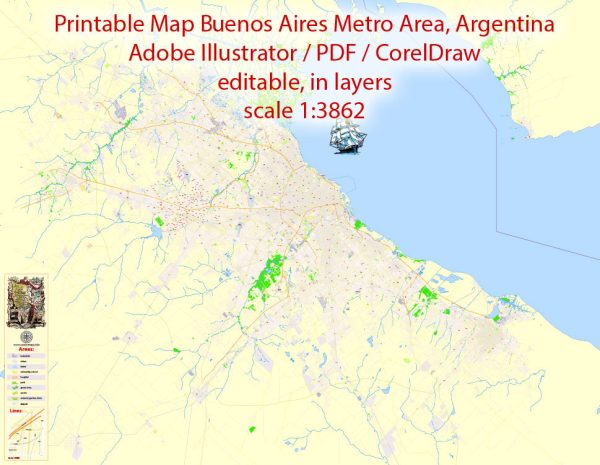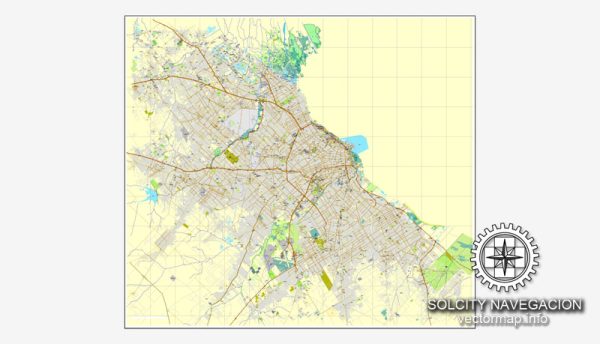Printable PDF Vector Map Buenos Aires Metropolitan Area, exact detailed City Plan, 100 meters scale map 1:3862, editable Layered Adobe PDF, 41 Mb ZIP.
All streets named, main objects. Map for publishing, design, printing, publications, arts, projects, presentations, for architects, designers and builders, business, logistics. The most exact and detailed map of the city.
Layers: legend, grids, labels_roads, names_places, names_streets, names_objects, objects, arrows_streets, streets_roads, waterways, water_objects, color_fills.
Text format street names
You can edit this file by Adobe Illustrator, Adobe Acrobat, CorelDraw.
DWG, DXF, ESRI Shapes, and other formats – by request, same price, please contact.
Buenos Aires, Argentina.
This vector map of Buenos Aires city is used as a basis for design, editing, and further printing.
This is the most detailed, exact map of Buenos Aires city for high-quality printing and polygraphy. You can always clarify the map development date by contacting us.
For your convenience, all objects on Buenos Aires vector city map are divided into layers. And the editing is very easy – colors, lines, etc.
You can easily add any objects needed (e.g. shops, salons, sale points, gas station or attraction) on any layer of Buenos Aires vector map.
Buenos Aires is the capital and largest city of Argentina. The city is located on the western shore of the estuary of the Río de la Plata, on the South American continent’s southeastern coast. “Buenos Aires” can be translated as “fair winds” or “good airs”, but the former was the meaning intended by the founders in the 16th century, by the use of the original name “Real de Nuestra Señora Santa María del Buen Ayre”. The Greater Buenos Aires conurbation, which also includes several Buenos Aires Province districts, constitutes the fourth-most populous metropolitan area in the Americas, with a population of around 14 million.
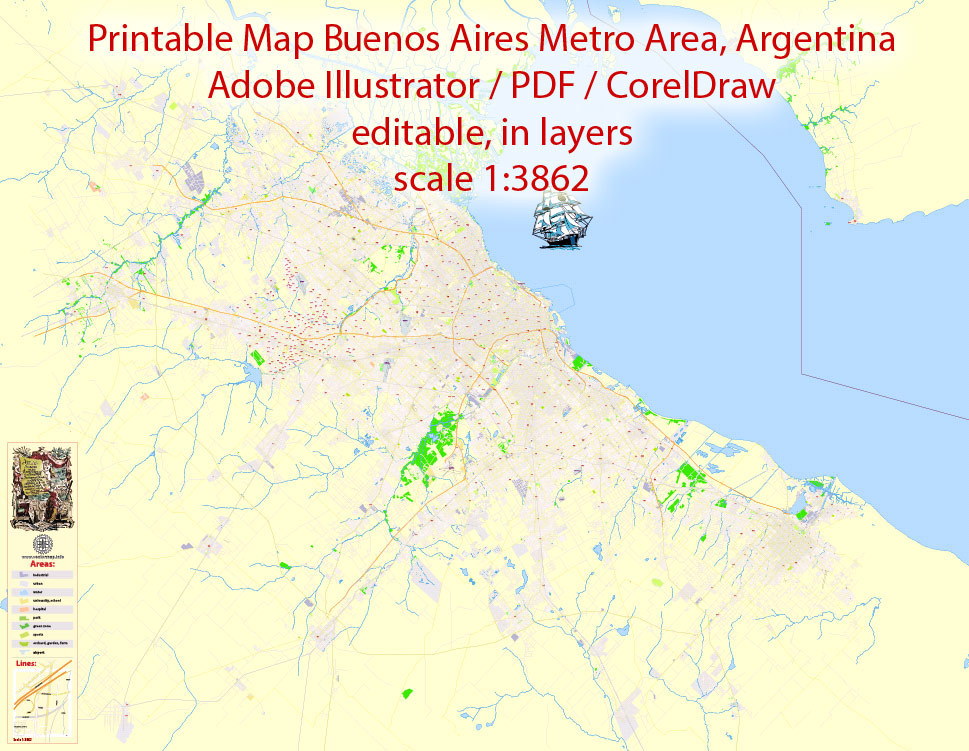
One of the advantages of Buenos Aires city vector maps of our production is the relevance of cartographic data, we constantly update all our products.
This vector map of Buenos Aires city is used by:
designers, layout designers, printers, advertisers and architects. Our product – vector maps – is designed for further editing and printing in large formats – from @Wall format (a few meters) to A-0 and A-1, A-2, A-3.
The Buenos Aires city map in vector format is used for design, urban planning, presentations and media visualizations.
The advertising and presentation map of Buenos Aires city (usually the final designer marks the routes, and puts the client’s objects (shops, saloons, gas stations etc.)
The undoubted advantage is that people will NEVER throw out this advertising product – the map. In fact, as an advertising medium, a city map is the most “long-playing” of the well-known polygraphic advertising media, with the longest lifespan, and the maximum number of interactions with the customer.
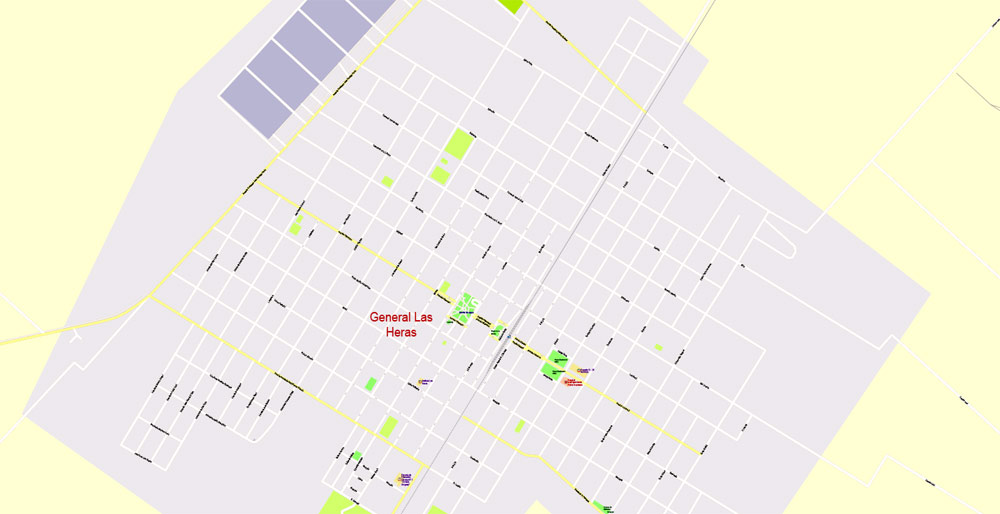
For travelers, maps are sold at the airports and gas stations around the world. Often the source is our vector maps.
Take a look, who purchases our vector maps of Buenos Aires city in “Our Clients and Friends” page – these are large and small companies, from super-brands like Volvo and Starbucks, to small design studios and printing houses.
It’s very easy to work with vector maps of Buenos Aires city, even for a not very experienced designer who can turn on and off the map layers, add new objects, change the colors of fill and lines according to customer requirements.
The undoubted advantage of Buenos Aires city vector maps in printing is an excellent and detailed visualization, when customer can expand a large paper map and instantly define his location, find a landmark, an object or address on map, unlike using the popular electronic formats of Google and Yandex maps for example.
The city of Buenos Aires is neither part of Buenos Aires Province nor the Province’s capital; rather, it is an autonomous district. In 1880, after decades of political infighting, Buenos Aires was federalized and removed from Buenos Aires Province. The city limits were enlarged to include the towns of Belgrano and Flores; both are now neighborhoods of the city. The 1994 constitutional amendment granted the city autonomy, hence its formal name: Autonomous City of Buenos Aires (Ciudad Autónoma de Buenos Aires; “CABA”). Its citizens first elected a chief of government (i.e. mayor) in 1996; previously, the mayor was directly appointed by the President of the Republic.
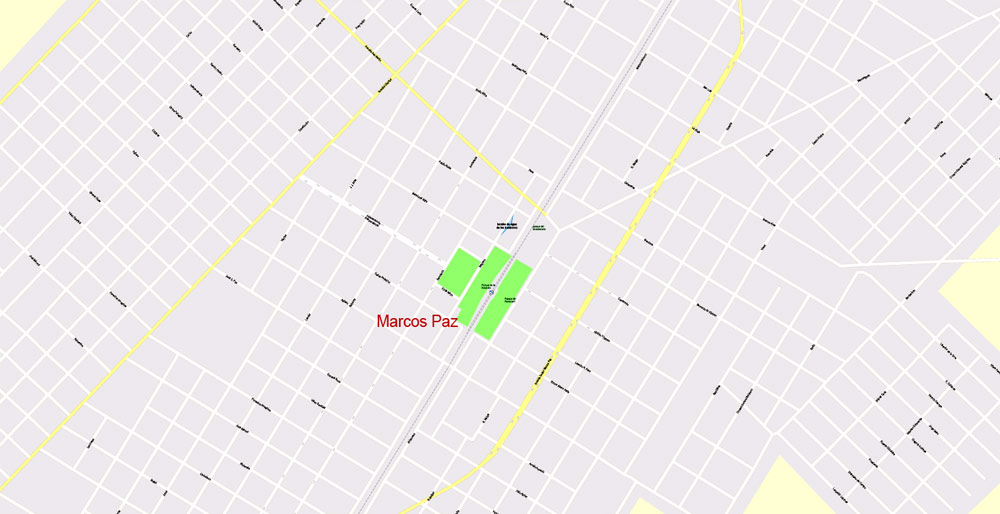
Printable vector maps of Buenos Aires city are much more convenient and efficient than any electronic maps on your smartphone, because ALL DETAILS are displayed in the entire space of Buenos Aires city map.
Useful tips on working with vector maps of cities and countries in Adobe Illustrator.
«V» – launches the Selection tool (cursor, black arrow), which makes active any vector line.
«А» – launches the Direct Selection tool (white cursor), allows you to select curve elements and drag them to the desired place.
«R» – activates the Rotate tool, which helps you rotating selected objects around the center point by 360 degrees.
«E» – gives you the opportunity to use the Eraser tool and erase unnecessary parts.
«X» – switches between Fill and Stroke in the Tools section. Try to get used to this hot key and
you will quickly understand that you can’t live and work without it.
Buenos Aires is considered an ‘alpha city’ by the study GaWC5. Buenos Aires’ quality of life was ranked 91st in the world, being one of the best in Latin America in 2018. It is the most visited city in South America, and the second-most visited city of Latin America (behind Mexico City).
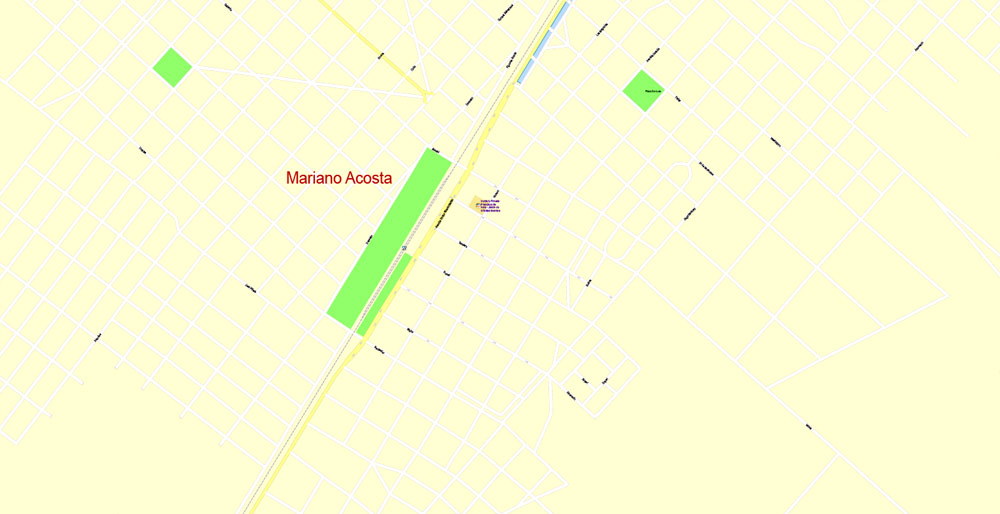
Guides are not limited to vertical and horizontal in Adobe Illustrator. You can also create a diagonal guide for example. Moreover, you can turn any contours into guides. Select the outline and go to View > Guides > Make Guides (Create Guides), or simply press Cmd/Ctrl + 5. You can also turn the guides back into an editable object. Go to menu, View > Guides > Unlock Guides (Release Guides), select the guide you want to edit and select View > Guides > Release Guides (Reset Guides), or just press Cmd/Ctrl + Option / Alt + 5).
You will probably want to change the color scheme used on our Buenos Aires vector city map.
To quickly and effectively play with colors.
Of course, you can do it manually, all objects in our Buenos Aires city vector map are divided according to types and layers, and you can easily change the color gamma of vector objects in groups and layers.
But there is more effective way of working with the whole VECTOR MAP of Buenos Aires city and all layers:
The overview dialog «Edit colors»/«Repaint Graphic Object» (this dialog box name can change depending on the context):
If you have selected a part or a layer of Buenos Aires city vector map and open the dialog box by clicking the icon in the Control panel, on the Samples palette or the Color Catalog, or if you choose Edit > Edit Colors> Repaint Graphic Object, then the «Repaint Graphic Object» dialog box appears, and you get access to «Assign» and «Edit» tabs.
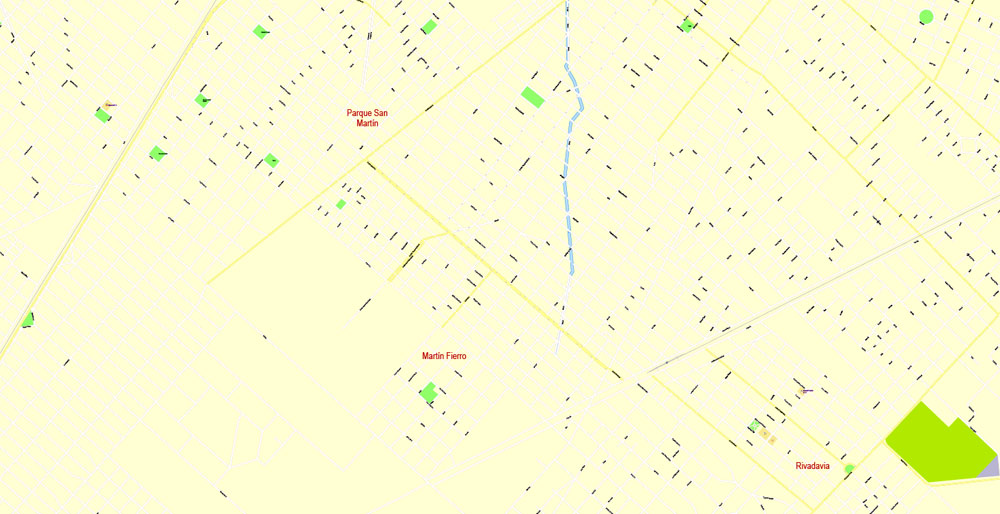
If a picture or a map fragment is not selected, and you open the dialog box by clicking the icon in the Control panel, on the Samples palette or in the Color Catalog, the «Edit Colors» dialog box appears and you can only access the «Edit» tab.
Regardless of the name at the top of the dialog box, the right-hand side always displays the color group of the current document, as well as two default color groups: Print Color and Grayscale. These color groups can be selected and used any time.
Create and edit color groups of Buenos Aires city vector map, and also assign colors using the «Edit Colors»/ а «Repaint Graphic Object» dialog box.
A. Creating and editing of a color group on the «Edit» tab
B. Assigning colors on the «Assign» tab
C. Select a group of colors from the «Color groups» list
The option «Repaint a graphic object» in the lower part of the dialog box allows you to preview the colors on a selected layer of Vector map, or a group of elements, and specify whether its colors will be redefined when the dialog box is closed.
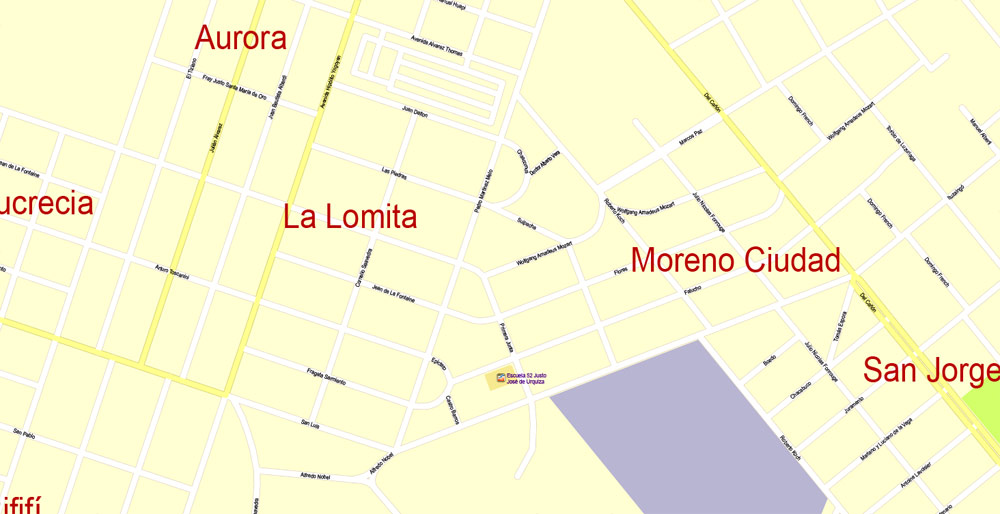
The main areas of the dialog box are:
«Edit»
The «Edit» tab is designed to create a new or edit the existing color groups.
The harmony rules Menu and the Color Wheel are used to conduct experiments with color harmonies. The color wheel shows how colors are related in color harmony, and the color bars allow you to view and manipulate an individual color values. In addition, you can adjust the brightness, add and remove colors, save color groups and view colors on the selected Vector Map of Buenos Aires city or a separated layers.
«Assign»
The «Assign» tab is used to view and control on how the original colors are replaced with colors from the color group like your corporate colors in the Vector Map of Buenos Aires city.
The assign color ability is provided only if the entire map, layer or fragment is selected in the document. You can specify which of new colors replace the current colors, whether the spot colors should be preserved and how colors are replaced (for example, you can replace colors completely or changing the color tone while maintaining the brightness). The «Assign» tab allows you to redefine colors in the Vector Map of Buenos Aires city, or in separate layers and fragments using the current color group or reducing the number of colors in the current Vector Map.
Buenos Aires is a top tourist destination, and is known for its preserved Eclectic European architecture and rich cultural life. Buenos Aires held the 1st Pan American Games in 1951 as well as hosting two venues in the 1978 FIFA World Cup. Buenos Aires will host the 2018 Summer Youth Olympics and the 2018 G20 summit.
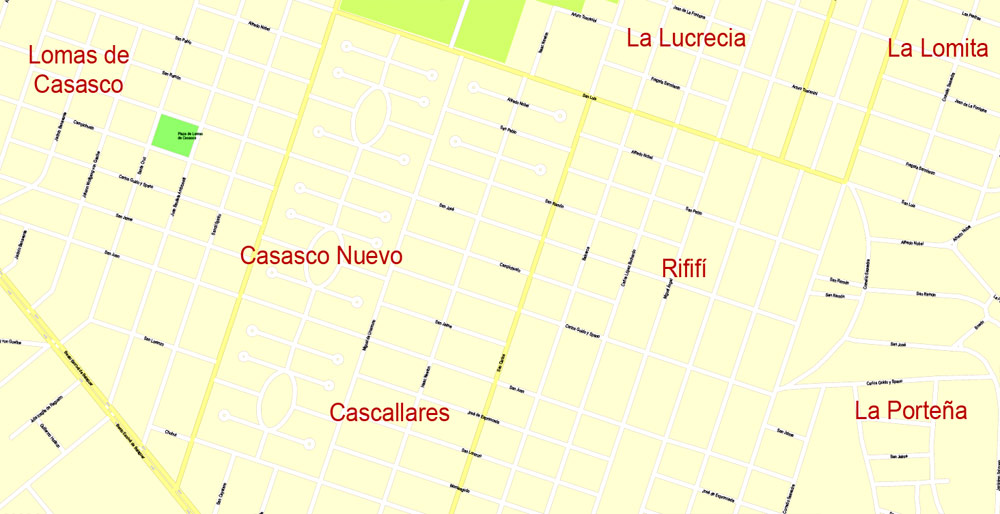
Color groups
Is a list of all saved color groups for current document (the same groups appear in the «Samples» palette). You can edit and delete the existing color groups, as well as creating a new ones using the list of “Color Groups” in the dialog box. All changes appear in the «Samples» palette.
The highlighted color group shows, which color group is currently edited.
Any color group can be selected and edited, or used to redefine the colors in the selected vector map of Buenos Aires city, its fragments or elements.
Saving a color group adds this group to the specified list.
Opening the «Edit Colors»/«Repaint Graphic Object» dialog box.
Open the «Edit Colors»/«Repaint Graphic Object» dialog box using one of the following methods:
«Edit»> «Edit Colors»> «Repaint Graphic object» or «Repaint With Style».
Use these commands if you need to edit the colors in the selected vector map of Buenos Aires city.
«Repaint Graphic object» button on the «Control» panel.
Use this button if you need to adjust colors of Buenos Aires city vector map using the а «Repaint graphic object» dialog box.
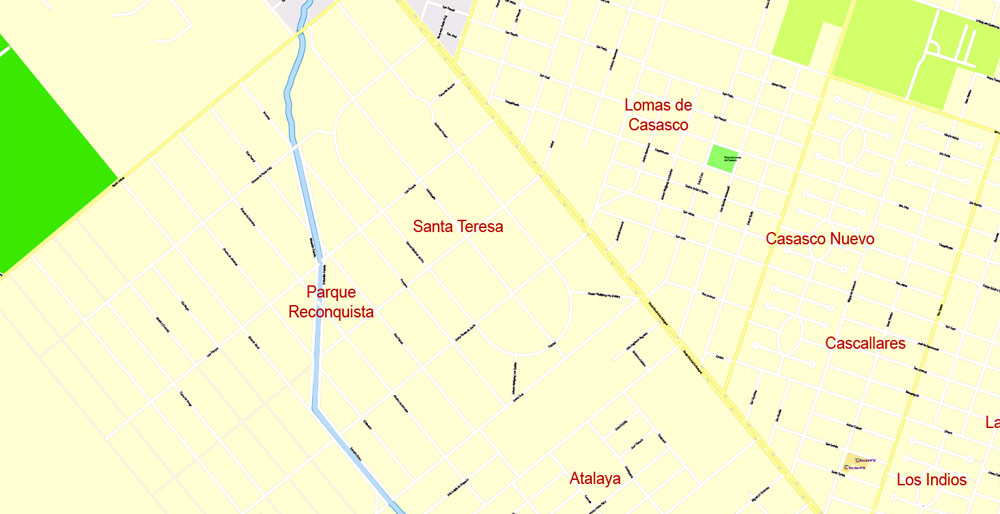
The specified button is available if the selected vector map or its fragment contains two or more colors.
Note. This color editing method is convenient for global color adjustment in a vector map, if global colors were not used when creating a City Map of Buenos Aires.
The «Edit colors» button or «Edit or apply colors» on the «Color Catalog» palette
Click this button if you need to edit colors on the «Color Catalog» palette or edit and then apply them to the selected Vector Map of Buenos Aires city or its fragment.
The «Edit color group» button or «Edit or apply color group» on the «Samples» palette.
Click this button if you need to edit the colors in the specific color group or edit and apply them to the selected Vector Map of Buenos Aires city or a group of its elements, for example, the whole layer “Streets and lines”. You can also double-click the color group in the Samples panel to open the dialog box.
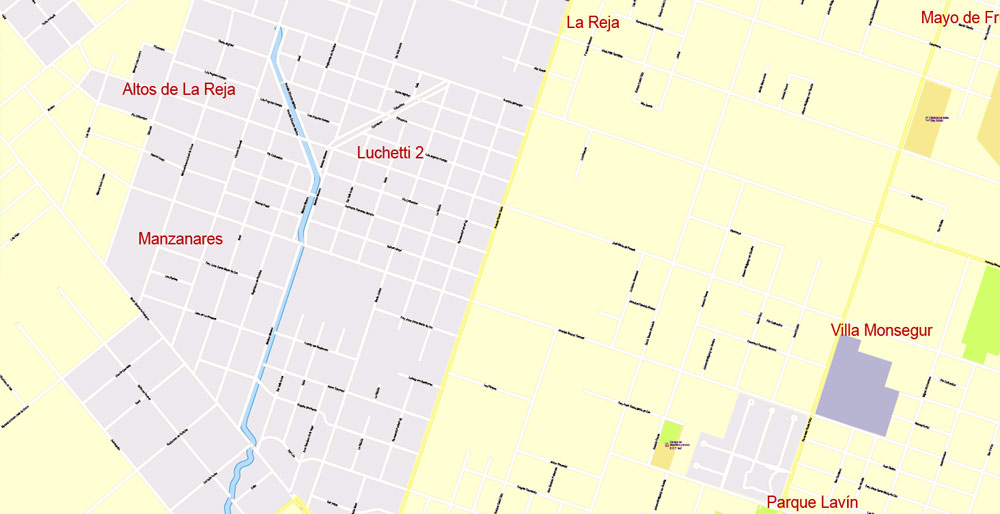
If the map file is too large and your computer freezes or even can’t open it quickly:
1. Try to reduce the color resolution of the video card (display) to 256 colors while working with a large map.
2. Using Windows Task Manager, select all the application you don’t need, while working with map, just turn them off.
3. Launch Adobe Illustrator. (DO NOT OPEN the vector map file)
4. Start the Windows Task Manager using administrator rights > Find the “Illustrator” process > set the «real time» priority,
5. Open the file. When you see the LEGACY FONT popup window – click “OK” (do not update). You can restore the TEXT later.
6. Can also be useful: When file is opened – Edit > Settings > Basic Settings > disable smoothing. /// It looks scary, but works quickly)))
We recommend saving the file in Adobe Illustrator 10 version. It’s much more stable when working with VERY BIG size files.
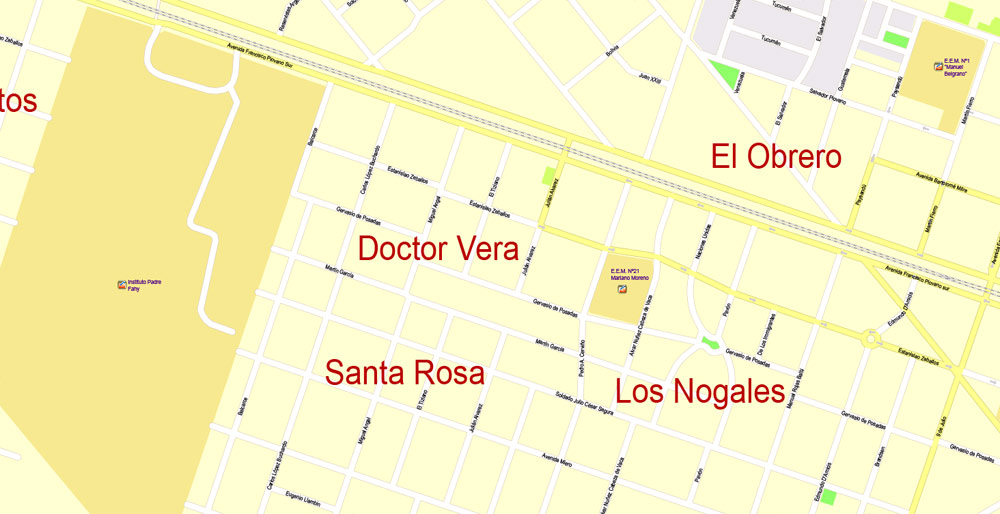
Buenos Aires is a multicultural city, being home to multiple ethnic and religious groups. Several languages are spoken in the city in addition to Spanish, contributing to its culture and the dialect spoken in the city and in some other parts of the country. This is because in the last 150 years the city, and the country in general, has been a major recipient of millions of immigrants from all over the world, making it a melting pot where several ethnic groups live together and being considered as one of the most diverse cities of the Americas.
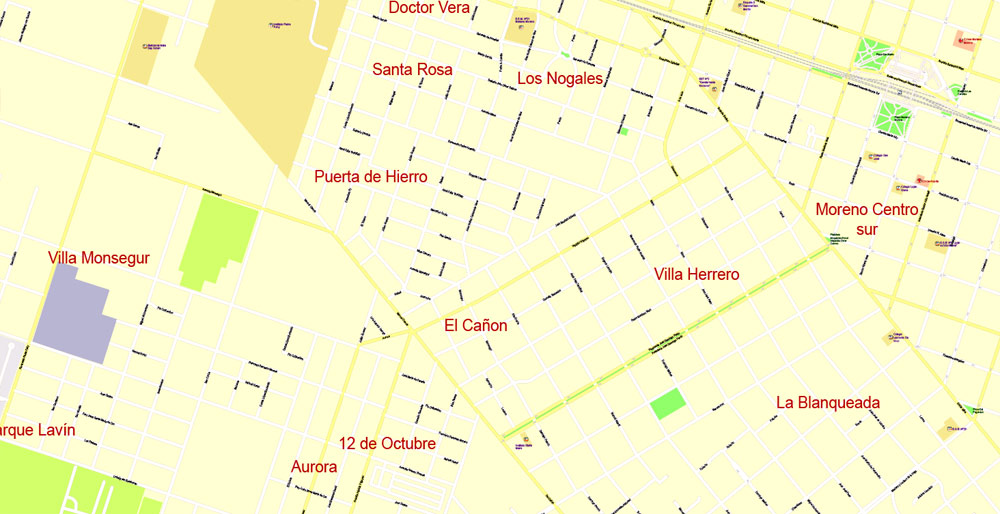
Geography
The city of Buenos Aires lies in the pampa region, except for some zones like the Buenos Aires Ecological Reserve, the Boca Juniors (football) Club “sports city”, Jorge Newbery Airport, the Puerto Madero neighborhood and the main port itself; these were all built on reclaimed land along the coasts of the Rio de la Plata (the world’s widest river).
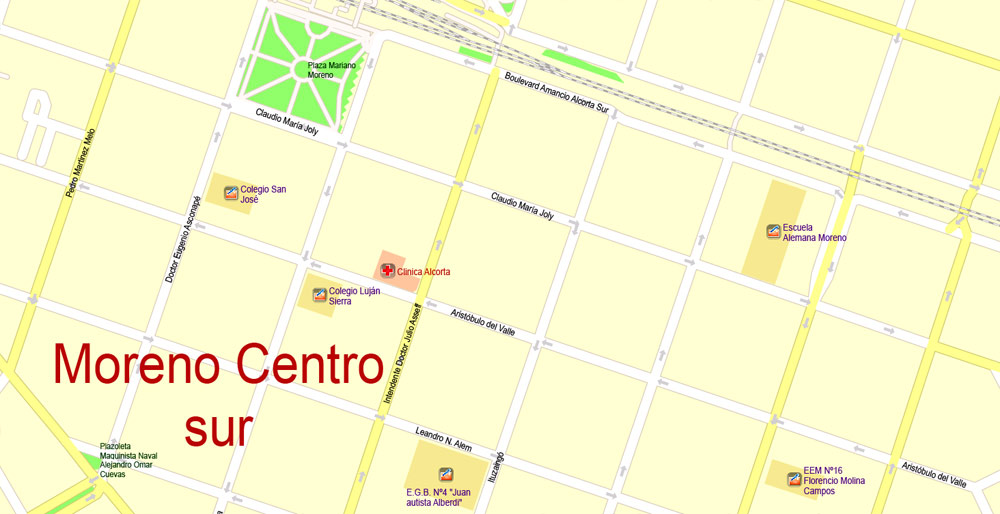
The region was formerly crossed by different streams and lagoons, some of which were refilled and others tubed. Among the most important streams are Maldonado, Vega, Medrano, Cildañez and White. In 1908 many streams were channelled and rectified, as floods were damaging the city’s infrastructure. Starting in 1919, most streams were enclosed. Notably, the Maldonado was tubed in 1954, and runs below Juan B. Justo Avenue.
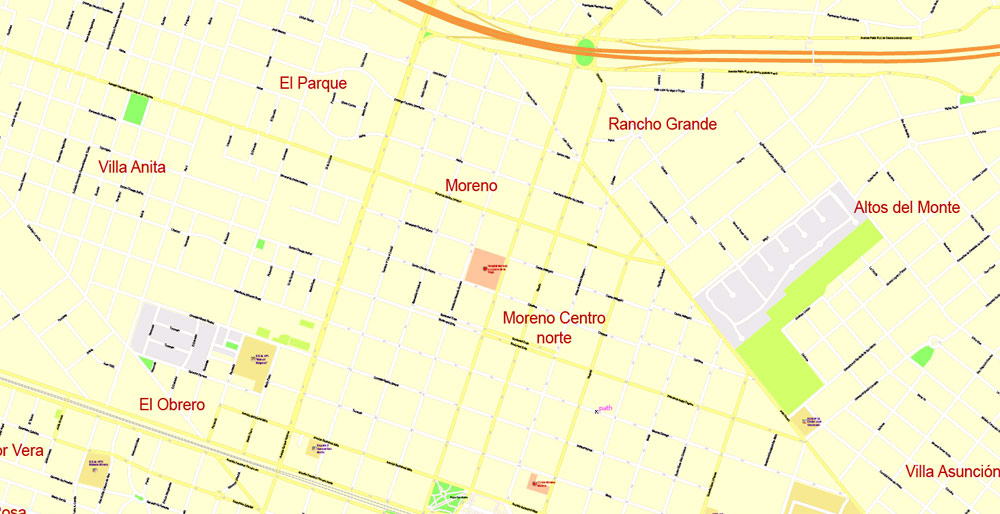
Districts
Main articles: Barrios of Buenos Aires and Communes of Buenos Aires
The city is divided into barrios (neighborhoods) for administrative purposes, a division originally based on Catholic parroquias (parishes). A common expression is that of the Cien barrios porteños (“One hundred porteño neighborhoods”), referring to a composition made popular in the 1940s by tango singer Alberto Castillo; however, Buenos Aires only consists of 48 official barrios.
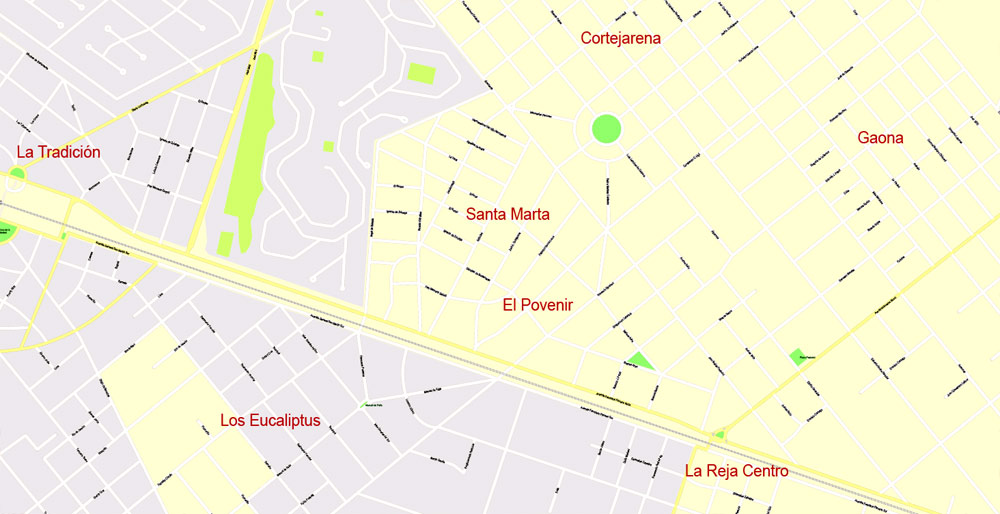
There are a several subdivisions of these districts, some with a long history and others that are the product of a real estate invention. A notable example is Palermo — the city’s largest district — which has been subdivided into various barrios, including Palermo Soho, Palermo Hollywood, Las Cañitas and Palermo Viejo, among others. A newer scheme has divided the city into 15 comunas (communes).
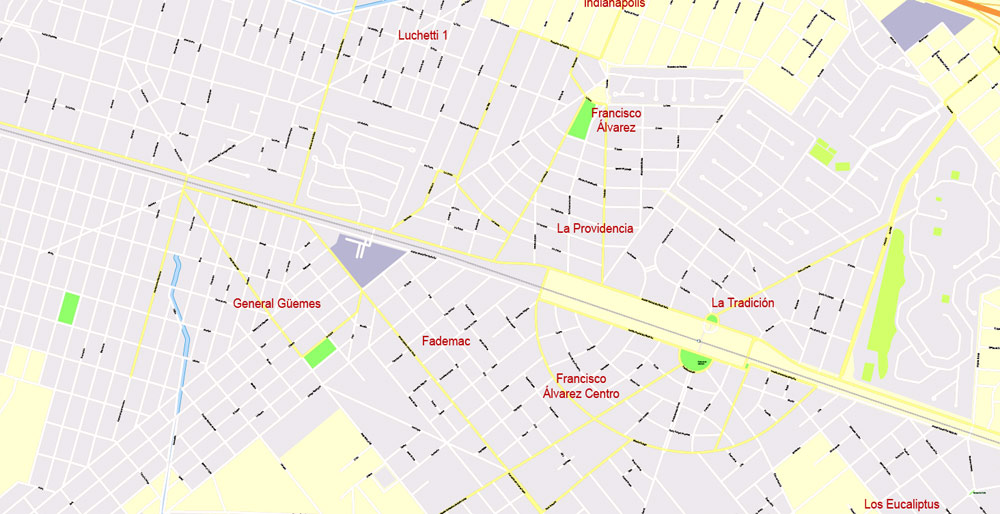
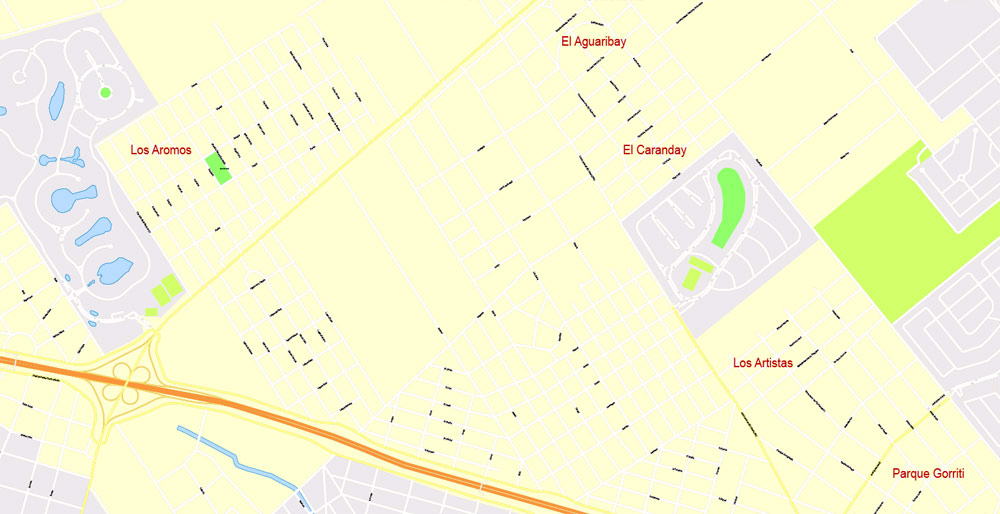
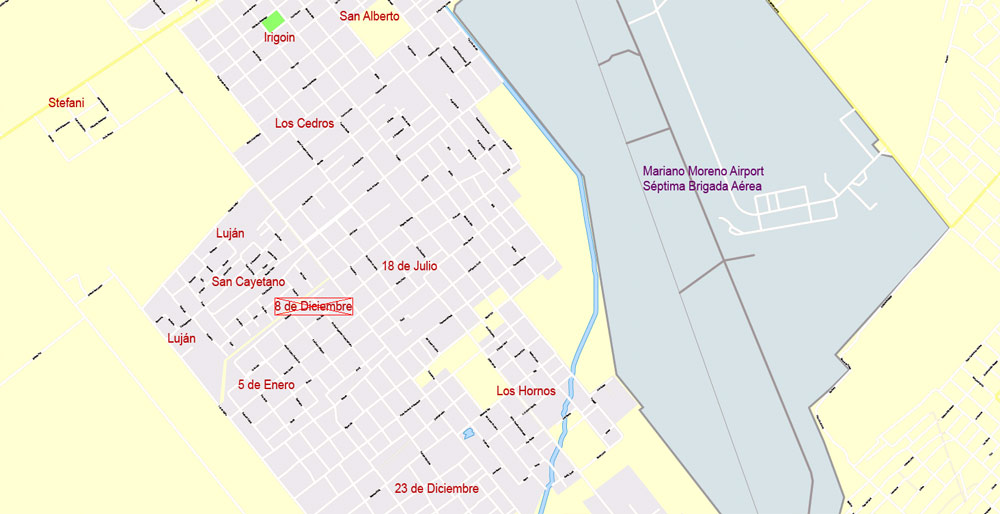
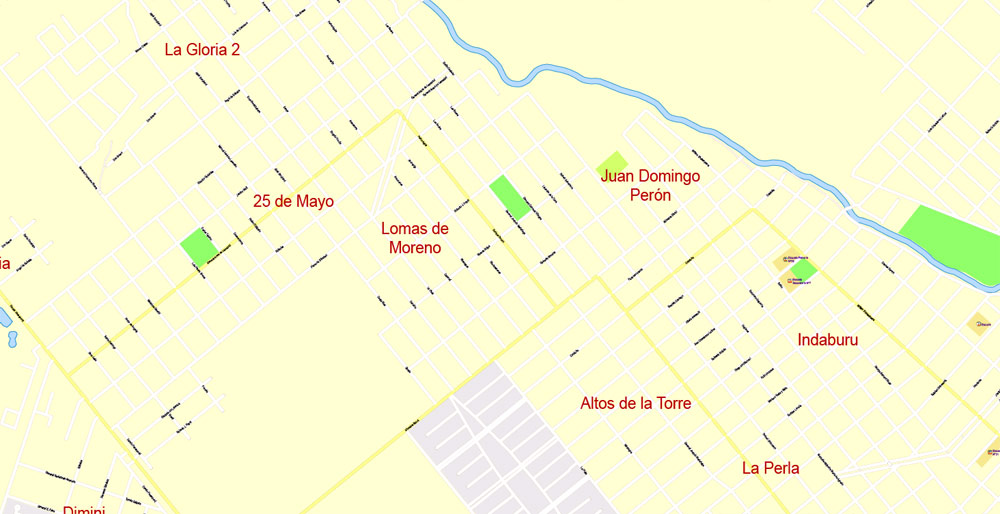
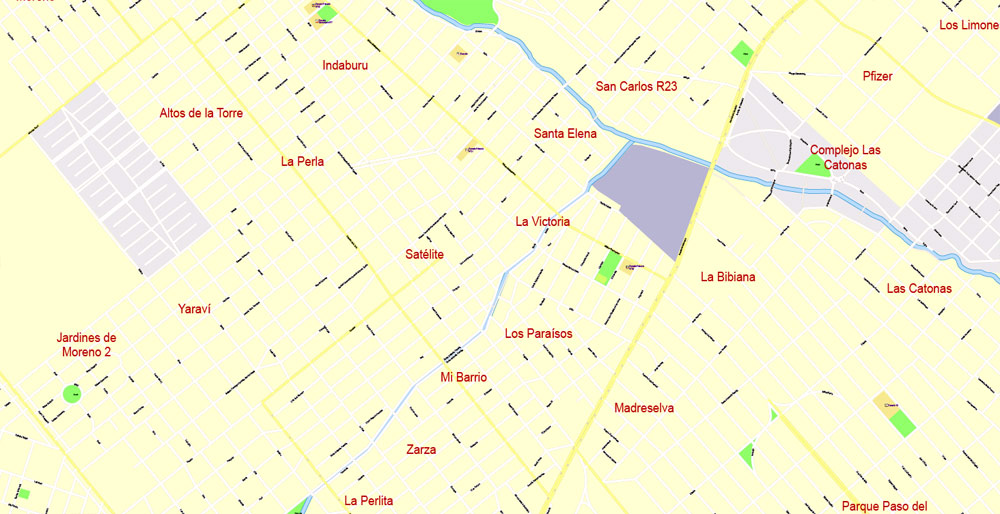
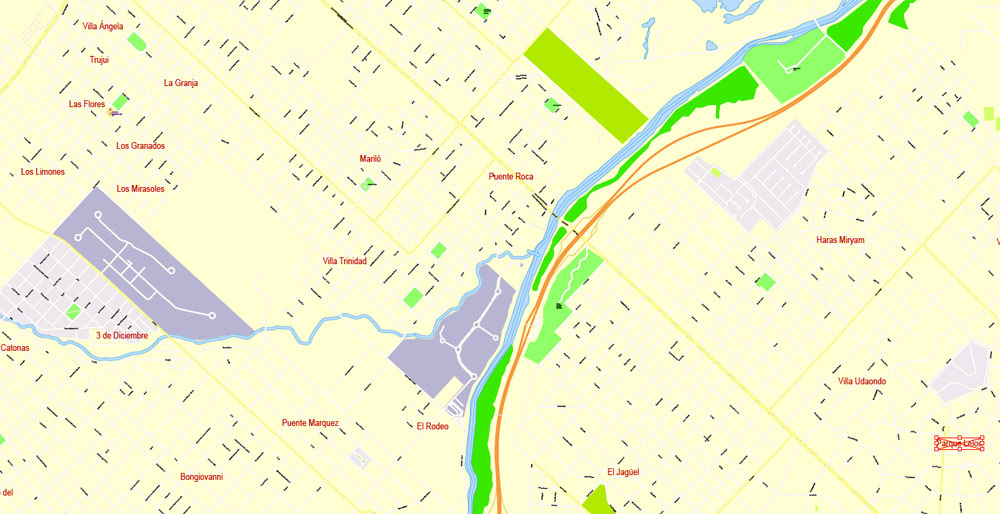
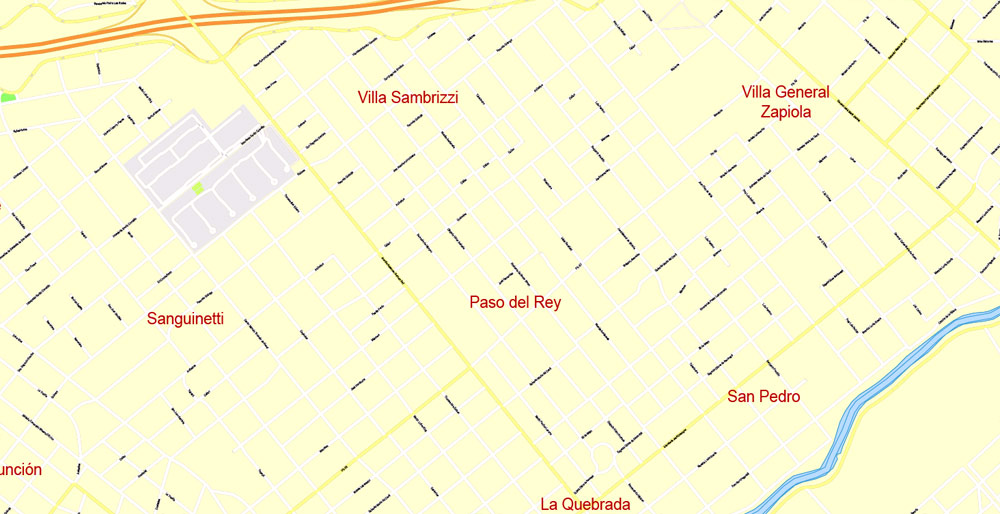
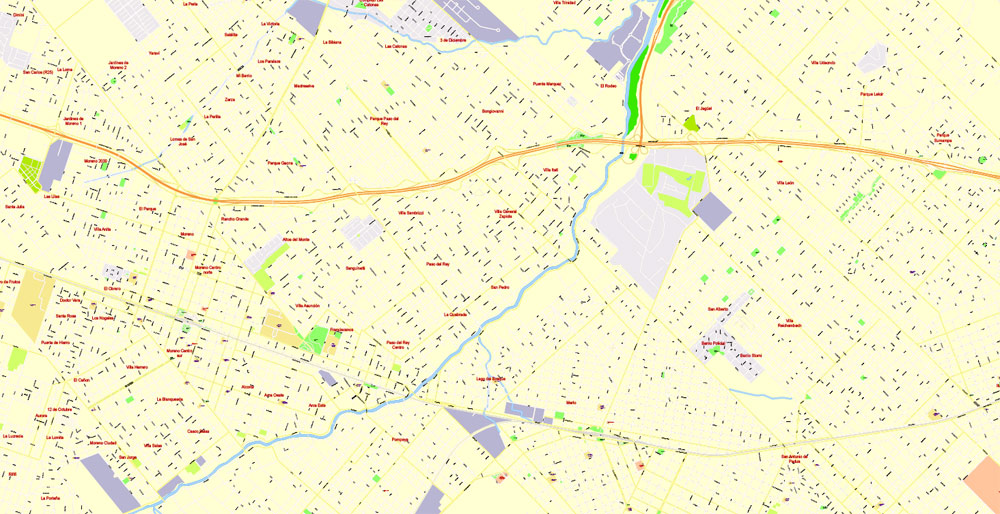
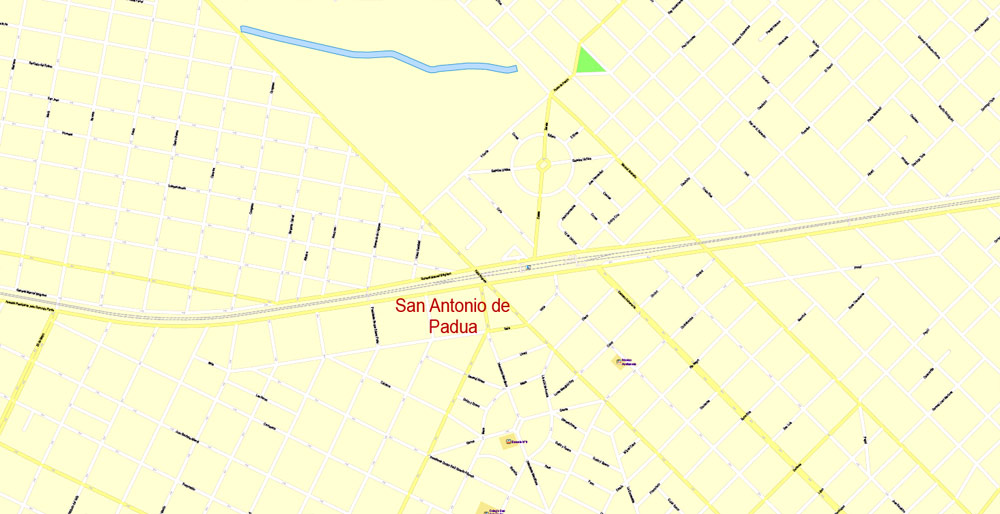
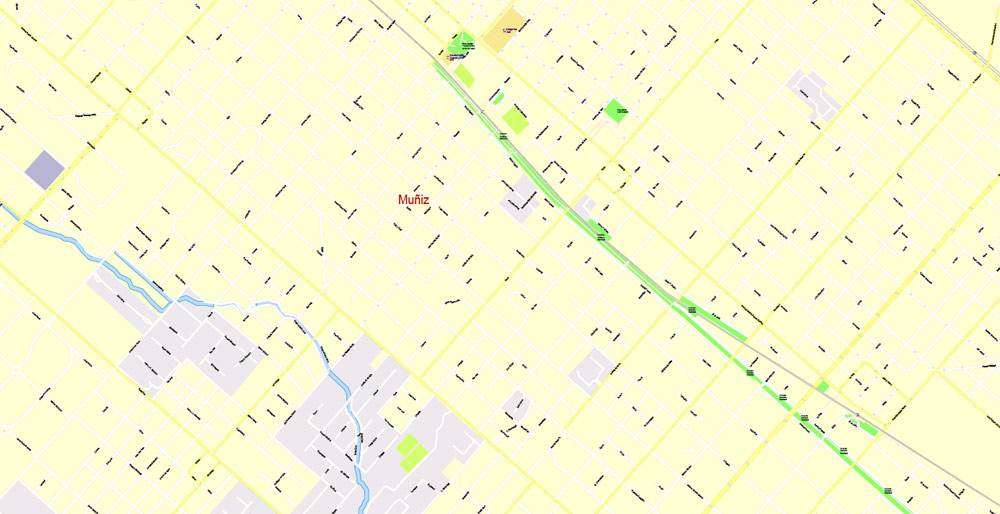
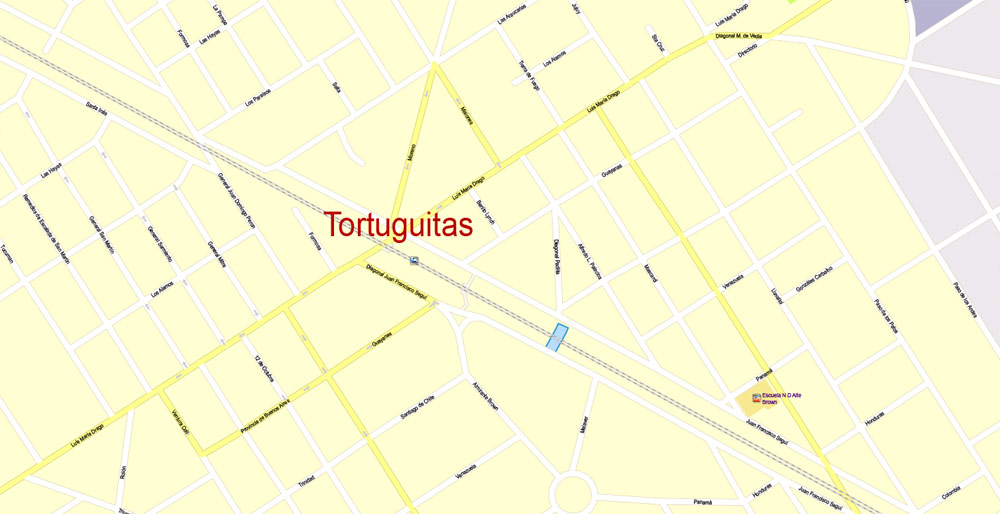
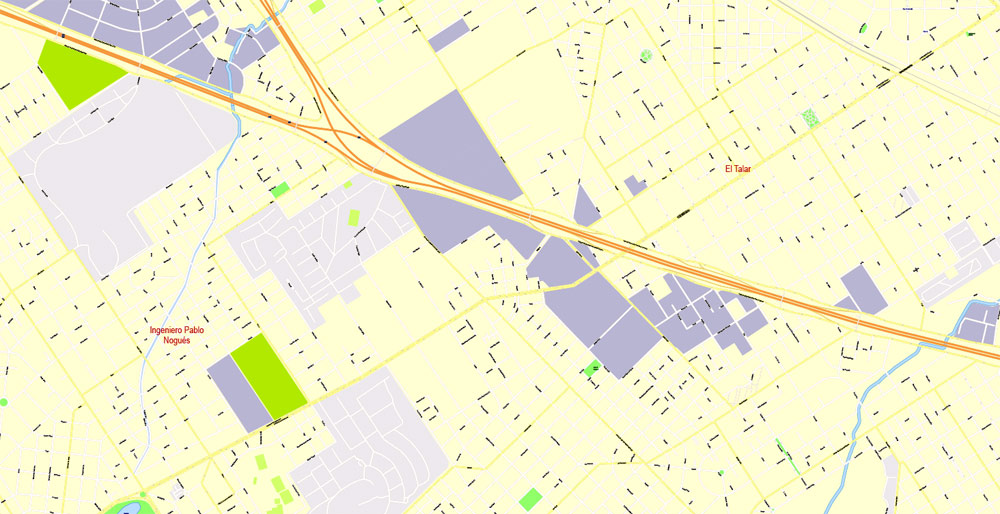

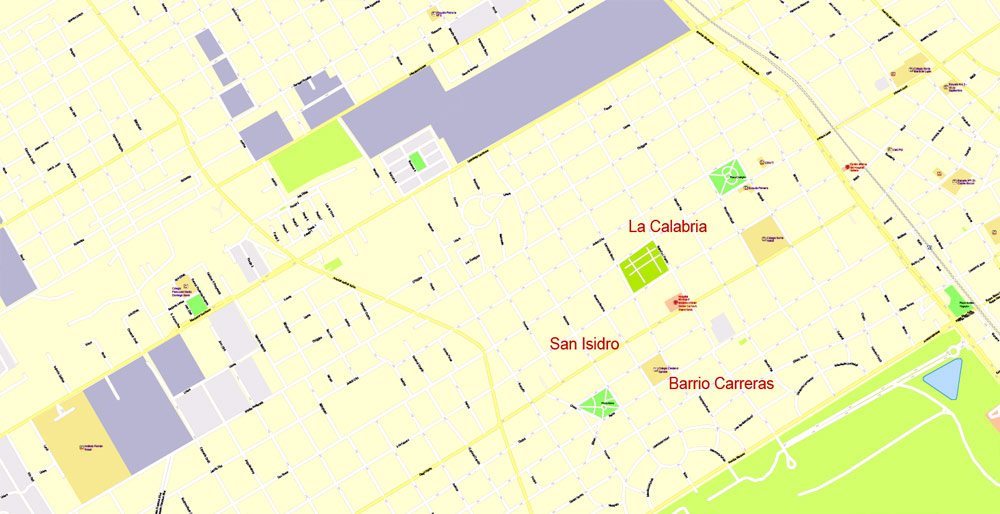
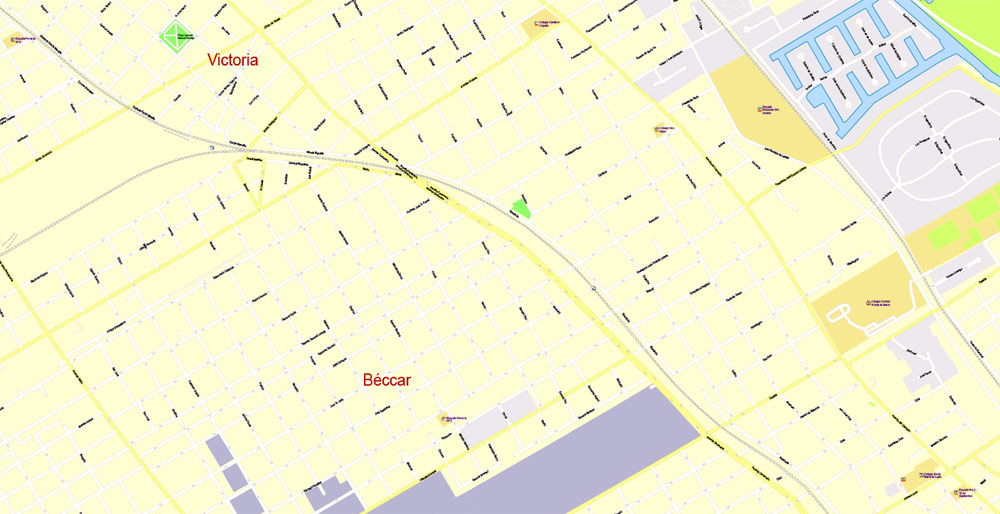
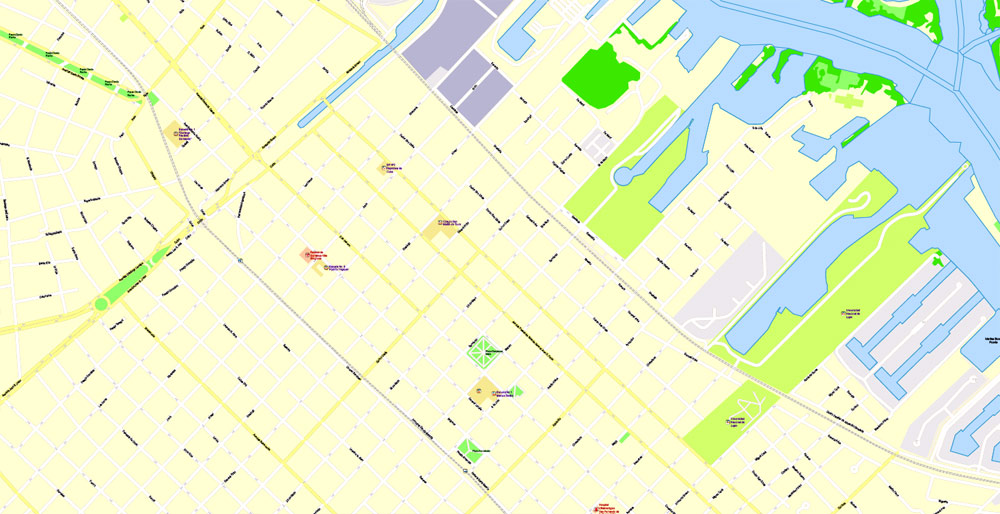
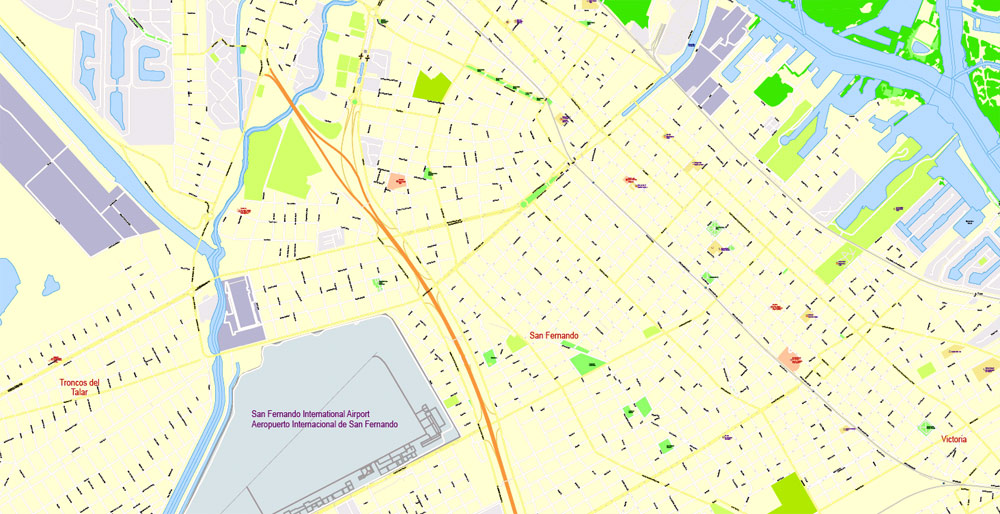
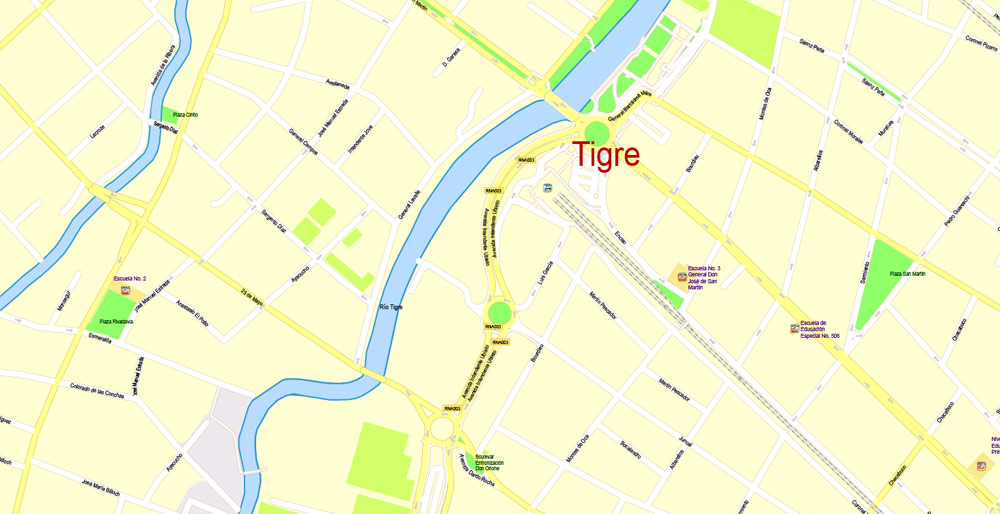
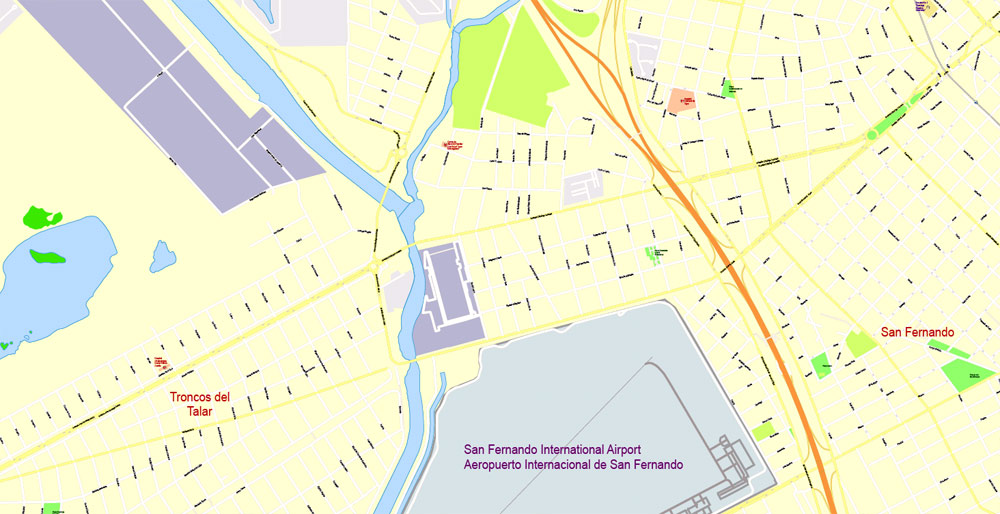
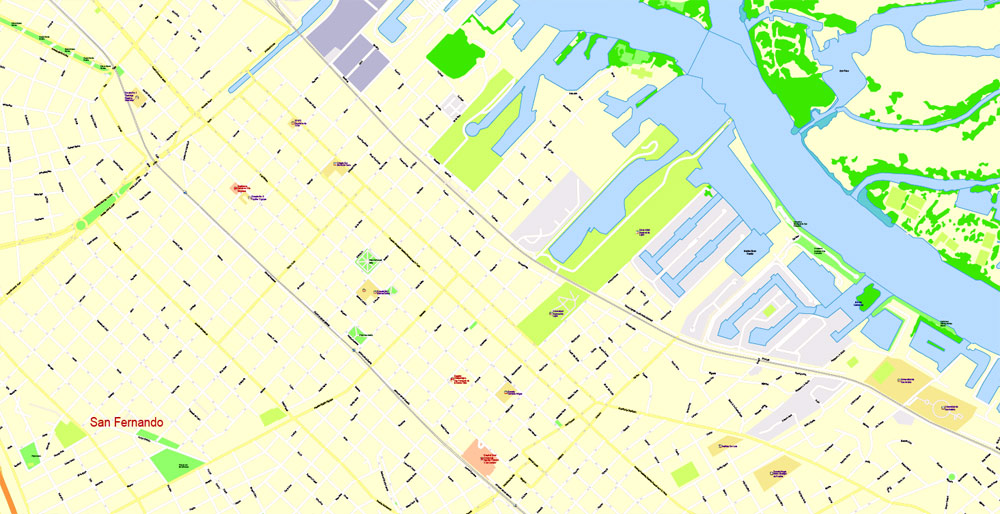
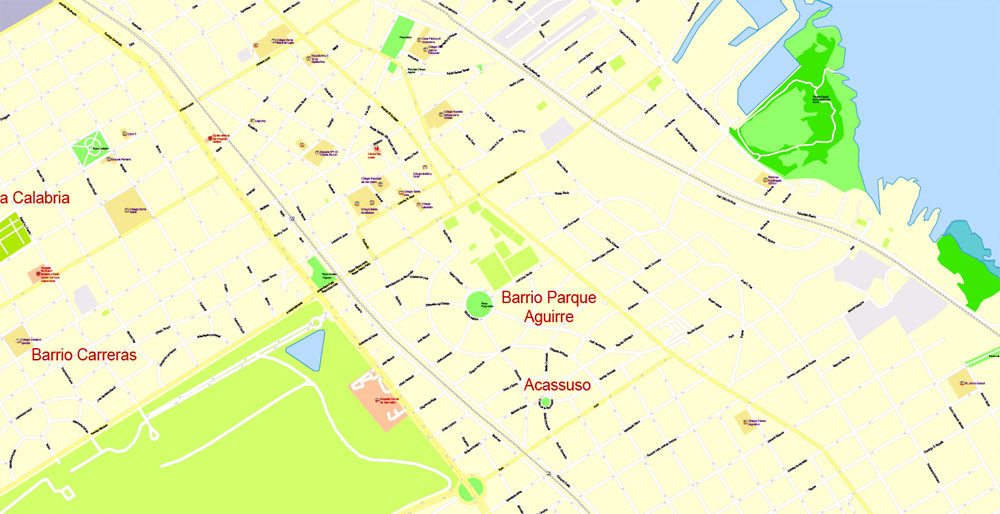
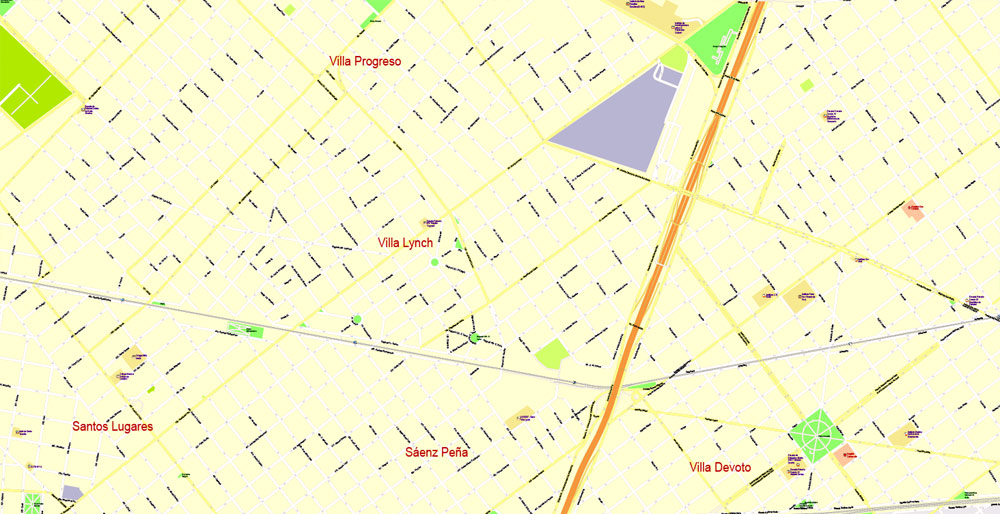
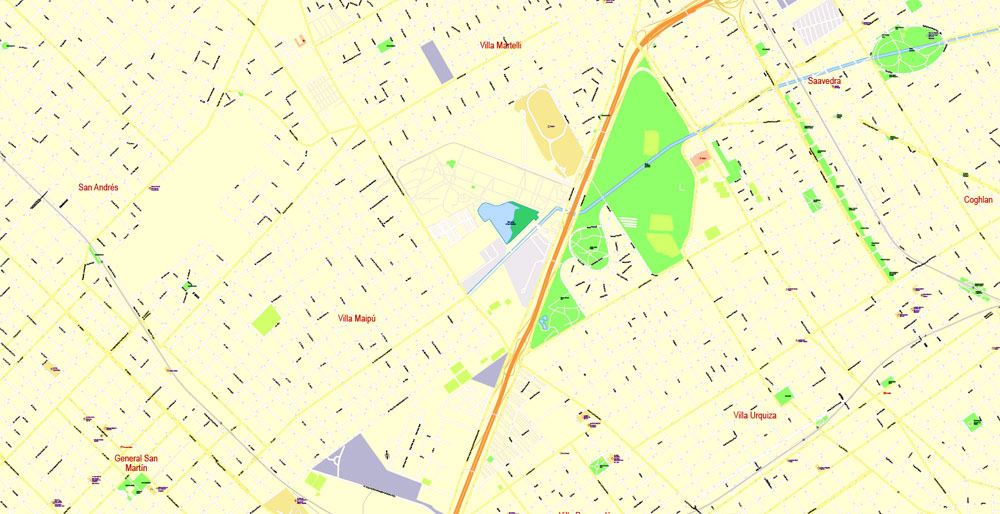
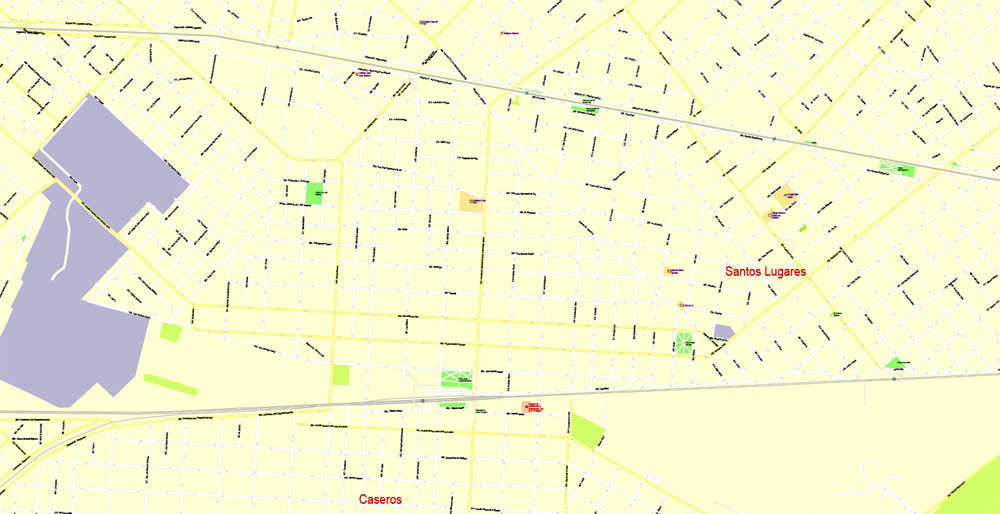
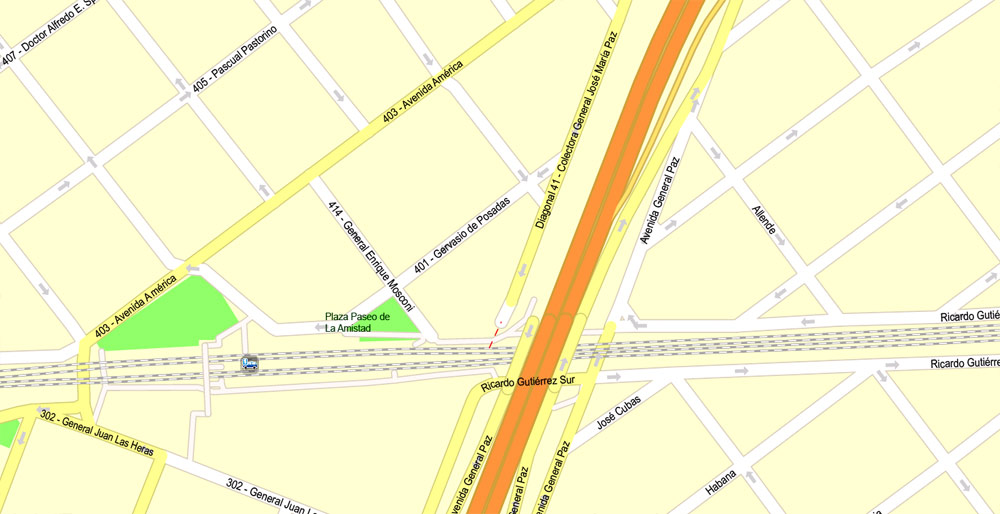

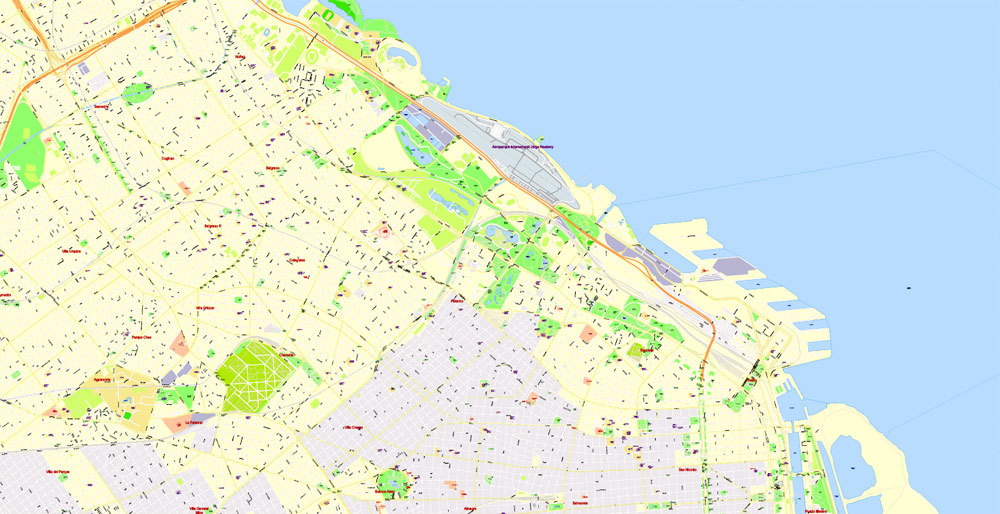
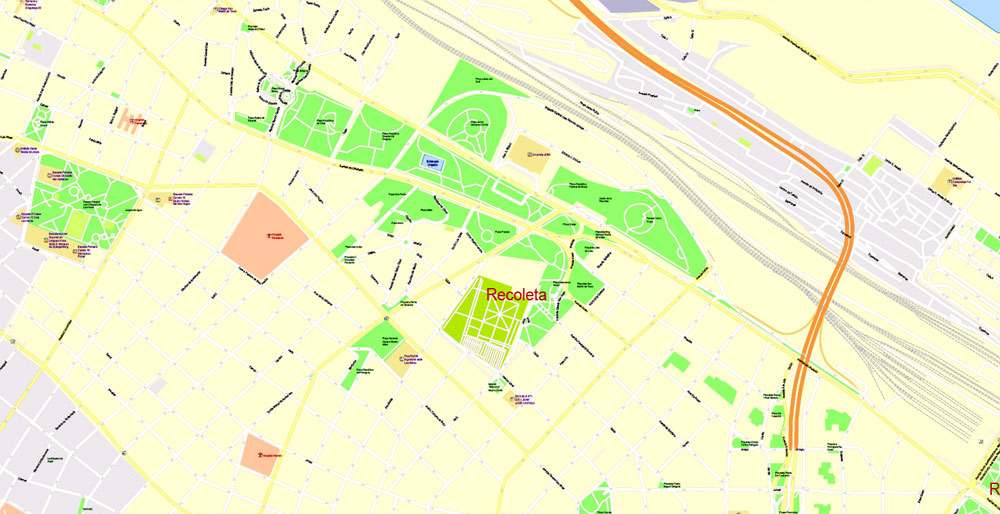
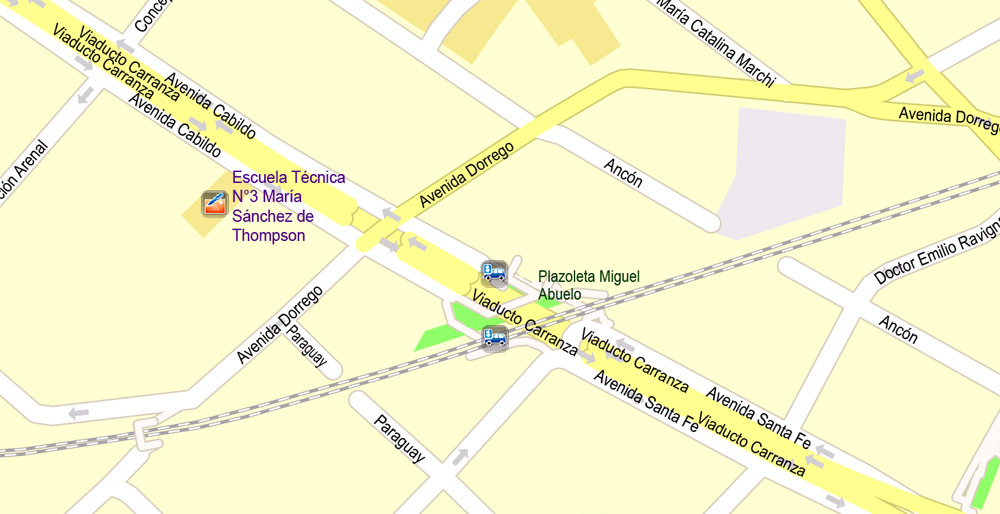
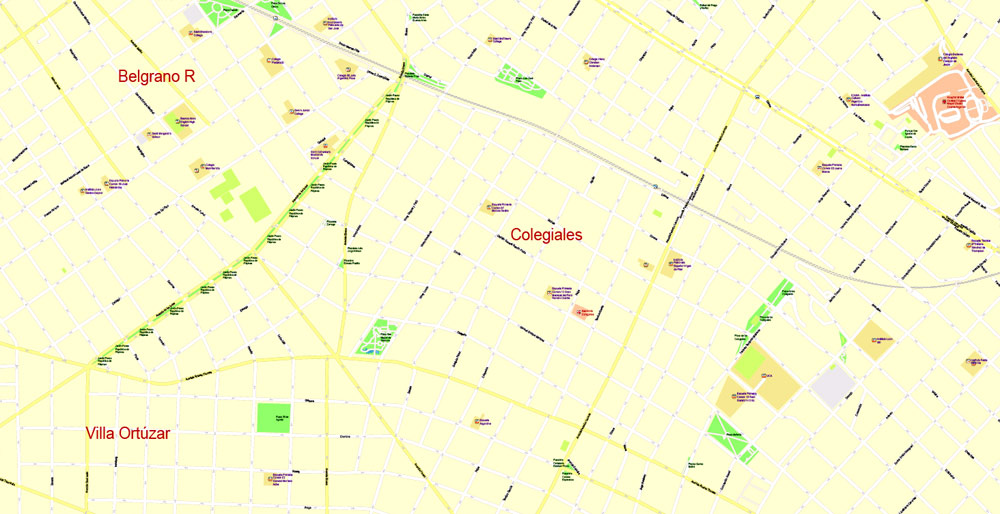

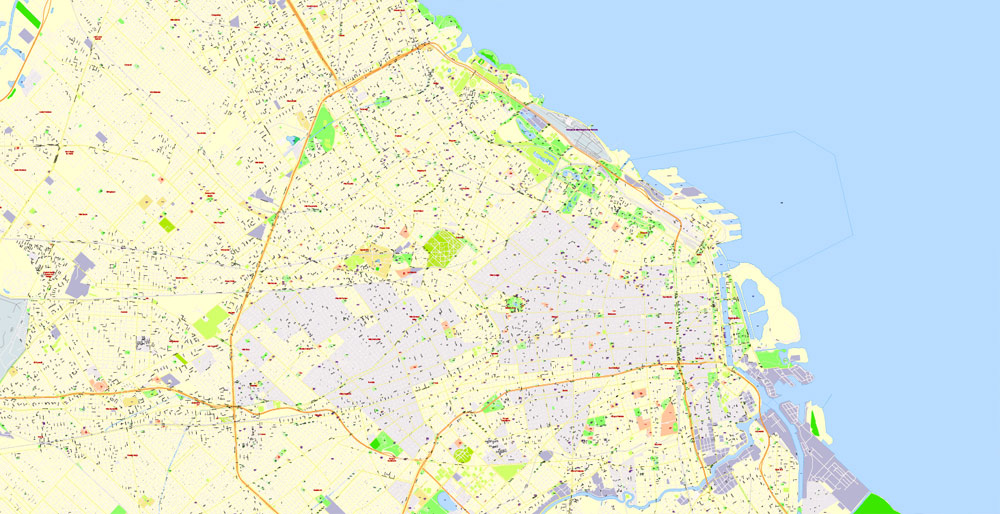
Buenos Aires
Capital of Argentina
Buenos Aires is Argentina’s big, cosmopolitan capital city. Its center is the Plaza de Mayo, lined with stately 19th-century buildings including Casa Rosada, the iconic, balconied presidential palace. Other major attractions include Teatro Colón, a grand 1908 opera house with nearly 2,500 seats, and the modern MALBA museum, displaying Latin American art.
Great Buenos Aires (Spanish: Gran Buenos Aires, GBA), Buenos Aires Metropolitan Area or Buenos Aires Metropolitan Region refers to the urban agglomeration comprising the autonomous city of Buenos Aires and the adjacent 24 partidos (districts) over the Province of Buenos Aires. Thus, it does not constitute a single administrative unit. The conurbation spreads south, west and north of Buenos Aires city. To the east, the River Plate serves as a natural boundary.
Urban sprawl, especially between 1945 and 1980, created a vast conurbation of 9,910,282 inhabitants in the 24 conurbated partidos, as of 2010, and a total of 12,801,365 including the City of Buenos Aires, a third of the total population of Argentina and generating more than half of the country’s GDP.
Area
• Metro 3,830 km2 (1,480 sq mi)
Population 12,801,365 (24 partidos, plus Federal District)
• Metro 13,641,973 (including partidos not yet conurbated)
• Metro density 3,342.39/km2 (8,656.8/sq mi)
















































 Author: Kirill Shrayber, Ph.D.
Author: Kirill Shrayber, Ph.D.